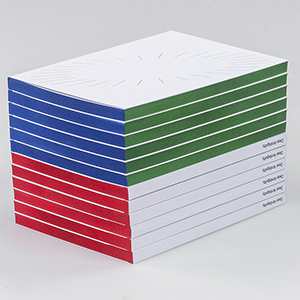
Interview with Dimitrina Sevova
excerpt from the book Dear Ambiguity, – (Un)learning from the virus. Graduating in the COVID-19 pandemic, ZHdK, 2021. Questions by Marie-France Rafael and Yasmin Afschar
What does it mean to you to finish your fine arts studies in summer 2020, right now of all times? How do you perceive the latest events? And do they have an impact on your work?
In the first days of the lockdown I felt like the protagonist of a sci-fi movie in which anything could be expected, like aliens had just landed… Something erotic lies in the horror and fears; the sublime somehow elevates us. This ungrounding is an opening to metaphysics. It is quantization and virtualization. Graduating right now, of all times, is a moment in contrast to imaginary time, as perhaps real time is a human invention and does not exist beyond our systems and models. The pandemic inscribes itself into the endless crises of the present, and makes palpable to what extent we live in a constructed world, unable to call into existence other futures, and end up in a chain of crises, from systematic inequalities and climate change to care crises and others. The swift liquidation of space-time, which is also a liquidation of material culture and the physical body, troubles me, and from my point of view, art is very much about their production in resistance to these developments. Under the conditions of digital time, even value and meaning shrink to a very tiny moment in which with a click we consume everything, including art and inter-human relations, immediately online in “real time.” There is no before or after, just the right now, a now in which we have been stripped of any sense of historical time and poetic time.
What is the significance of the indeterminable and uncertain in your work? What role, do you think, can art play in this void of non-knowledge?
There is a distinction between the epistemologically conditioned and epistemologically unconditioned real, and the metaphysical void of the real, between scientific realism and realism in art and philosophy, that allows for emancipatory practices. The void has the philosophical status of the ontological event. So, the non-knowledge of the void is the no longer ironic but tragic detachment in the comeback of the real, which is about (in)existence and the nature of becoming rather than being. It is the transversal in the logic of sense that produces a specific knowledge of non-knowledge in logical discourse, as infinity is a human invention and a matter of imagination. The hazard of the infinitely empty void is the cosmic animal or stellar matheme, i.e., the whole chance of change so dear to art. It is also micropolitics and cosmopolitics – the alley to the pure outside and the play of forces, the invisible community in the communality of the virtual that brings about other distributions across time and space. It seems that crises and art are interdependent like trauma and catharsis, which is not exactly communication, but also transference of love, and moreover, a virtual force that traverses everything, a matter of resistance and surviving. Psychoanalysis and art share the desire to chart the void, to organize chaos in a chaosmosis, i.e., to find a pattern, a repetition in which love and the void come together. Blindness and intuition are an intrinsic part of visual art. Art fakes reality, disenchants it. It does not create illusions but artifices and metamorphoses. In Lacan’s S.I.R., the vase in its “signifying function” is only characterized by the void it creates. In a certain way, this applies to all art, is its starting point. Uncertainty is the principle of the universe, as a certain randomness runs through any system, undermining the idea of universal laws. That is why we build concepts, structures, and models, to deal with the fear of facing the unknown. The void of non-knowledge determines both disruption and creative process. Rigorous sciences aim to exclude inconsistencies. By contrast, in the history of art, achievements have been perceived as irregularities. The history of art is not one of linear progression. Indeed, art makes speculative use of inconsistencies and intensifies them. In the archeological excavations of sciences’ obstacles, I find the speculative futures of art and its relation to knowledge production fascinating.
Name three words that define your current state of mind.
precarity, care, love – three verbs that sustain my art practices from one day to the next, that keep me going on. Let us not forget that art is a practice, very concrete, even if it deals with abstraction and voiding. With this, I would like to boldly say No, which is an ascetic Yes to the future.
